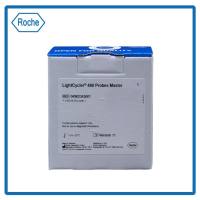Isolation of Plasmids for the Preparation of Probes
互联网
368
Most molecular probes are produced by cloning, or subcloning, the required “foreign” DNA fragment (i.e., the DNA sequence that will be used as the final probe) into a bacterial plasmid. This chapter describes the basic procedures necessary to produce plasmids of sufficient purity to label directly, or to use as polymerase chain reaction (PCR) substrates (and hence amplifying the “foreign” DNA fragment). If the plasmid is to be used as a substrate for PCR amplification, then it is only necessary to follow the steps outlined in Section 3.1 . This procedure was devised by Birnboim and Doly (1 ) and produces large yields of plasmid from bacterial cultures of the order of 1 mL, but the plasmid is contaminated with RNA (particularly the tRNA that is added as a carrier during the procedure) and with the genomic DNA of the host bacterium.







